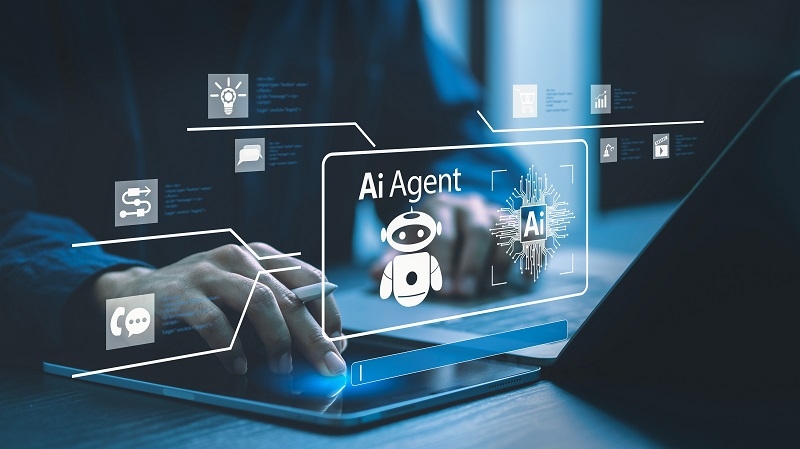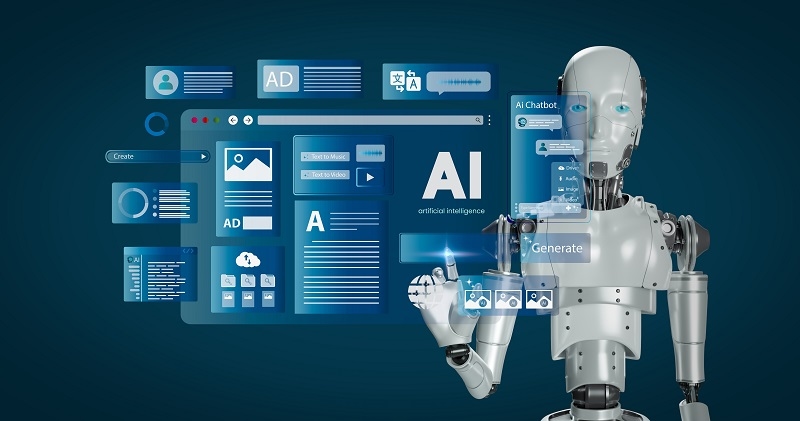
Artificial intelligence isn’t some distant future anymore. It’s sitting in your phone, quietly working in your shopping cart online, even suggesting playlists on your music app. But there’s a buzzword that’s popping up more and more — AI agents . And if you’ve ever tilted your head wondering what that even means, you’re not alone.
Let’s break it down in a way that feels simple. Because the truth is, this idea isn’t just for engineers. It’s going to shape how all of us interact with technology.
Think of an AI agent like the difference between a vending machine and a butler. A vending machine only gives you what you directly ask for: press the button, get the snack. A butler, on the other hand, pays attention to what you like, anticipates needs, and might even say, “You always want tea at 4 p.m., so I’ve prepared it already.”
That’s essentially what does an AI agent do — it perceives its environment, makes decisions, and acts on your behalf. Instead of waiting for every command, it uses context to work toward a goal.
You’ll also hear the term floating around: what is agentic AI. Sounds fancy, right? But all it means is an AI that takes initiative. Instead of waiting around for you to type or click, it proactively tries to get things done.
Let’s say you’re booking flights online. A chatbot will answer your direct questions: “Here are the available times.” An agentic AI? It might notice your chosen flight overlaps with a storm, then suggest earlier routes, book a hotel if you’re delayed, and send reminders. It’s the difference between answering a question and actually solving the bigger problem.
Okay, so let’s make AI agents explained a little less intimidating. Imagine your fridge is half empty. A regular app can show you recipes for chicken and rice because that’s all you have left. But an AI agent? It would suggest meals, check if you’re out of onions, add them to your grocery list, and maybe even place an online order for delivery.
That’s the big picture: agents connect dots. They don’t just hand you information. They take action.
Naturally, not all AI agents are created equal. Some are simple, some are complex. If you’re wondering, how many types of agents are there in AI, researchers generally group them into a few categories:
Simple reflex agents – They react to direct input. Think Roomba bumping into a wall and turning.
Model-based agents – These remember context, like a thermostat that learns patterns over weeks.
Goal-based agents – They actually aim toward specific outcomes.
Utility-based agents – They evaluate different possibilities and choose the most useful.
Learning agents – The most advanced, they improve with experience.
The idea here isn’t to memorize types but to realize there’s a spectrum — from simple tools to systems that adapt and improve constantly.
It’s easy to lump everything together. “Oh, that’s just a chatbot, right?” Not quite. Let’s look at agentic AI vs chatbot in plain terms.
A chatbot is like a cashier. You ask, “Where’s the milk?” and they point. End of story. An AI agent is like a personal shopper. You say, “I’m planning dinner,” and they bring you the milk, suggest sides, and even tell you which store has a discount.
Chatbots = reactive. AI agents = proactive. Simple difference, huge impact.
Do Check Out: How Gravitational Waves Are Changing Space Science
You might already be using them without realizing:
Customer service – They route support tickets and suggest fixes before a human steps in.
Finance apps – Spotting unusual charges or helping you budget automatically.
Healthcare – Reminding patients to take meds, flagging patterns in symptoms.
Smart homes – Adjusting lights, heating, or locks based on your habits.
It’s not flashy sci-fi robots. Most of it is quiet, background efficiency. But that’s exactly why it’s powerful.

The simple reason? Time. Agents save it. Instead of doing 10 tiny repetitive tasks, you hand them over. They also reduce the mental load — all those small reminders, checks, and decisions.
For companies, this means better efficiency. For individuals, it feels like life admin suddenly got lighter. And in industries like logistics or medicine, the potential is massive.
Of course, it’s not perfect. Some concerns are real:
Can we trust agents to always act in our best interest?
Are they learning from biased data that could lead to unfair outcomes?
How much personal info are they snooping on to “help” us?
And what happens if we lean too heavily on them and stop thinking for ourselves?
These aren’t minor details. They’re the questions regulators and companies are grappling with right now.
If you’re not technical, here’s the easiest way to shift perspective. Instead of asking, “What command should I give this program?” ask, “What result do I want?”
That’s the essence of agents. You don’t babysit them. You set the outcome, and they work backward to figure out the steps. Once you see it that way, it feels less alien and more like a natural evolution of technology.
The question everyone tiptoes around. Some jobs, yes. Especially repetitive, rule-based roles. But at the same time, new jobs are forming — managing AI, creating ethical guidelines, training systems. It’s less about replacement and more about reshaping work.
It’s going to require reskilling. But humans won’t vanish from the picture. If anything, we’ll become supervisors of increasingly capable assistants.
If you fast forward five or ten years, here’s what’s plausible:
Education: Personalized tutors that guide each student differently.
Healthcare: Digital companions monitoring health 24/7.
Workplace tools: Automating scheduling, reporting, and even early decision-making.
Creative spaces: Suggesting edits, layouts, or new ideas.
The trajectory is clear: more autonomy, more usefulness, more integration into daily life.
Read More: What Is Biomimicry? Nature-Inspired Climate Tech Trends
So, that’s AI agents in a nutshell. They’re not just buzzwords. They’re software helpers quietly reshaping how we live and work. The key takeaway? They don’t just answer. They act.
And the next time someone asks you, “Wait, what is agentic AI again?” you’ll be able to explain without blinking.
Because in the end, this isn’t about robots stealing jobs. It’s about building tools that act more like partners. And maybe, just maybe, making life a little easier in the process.
This content was created by AI